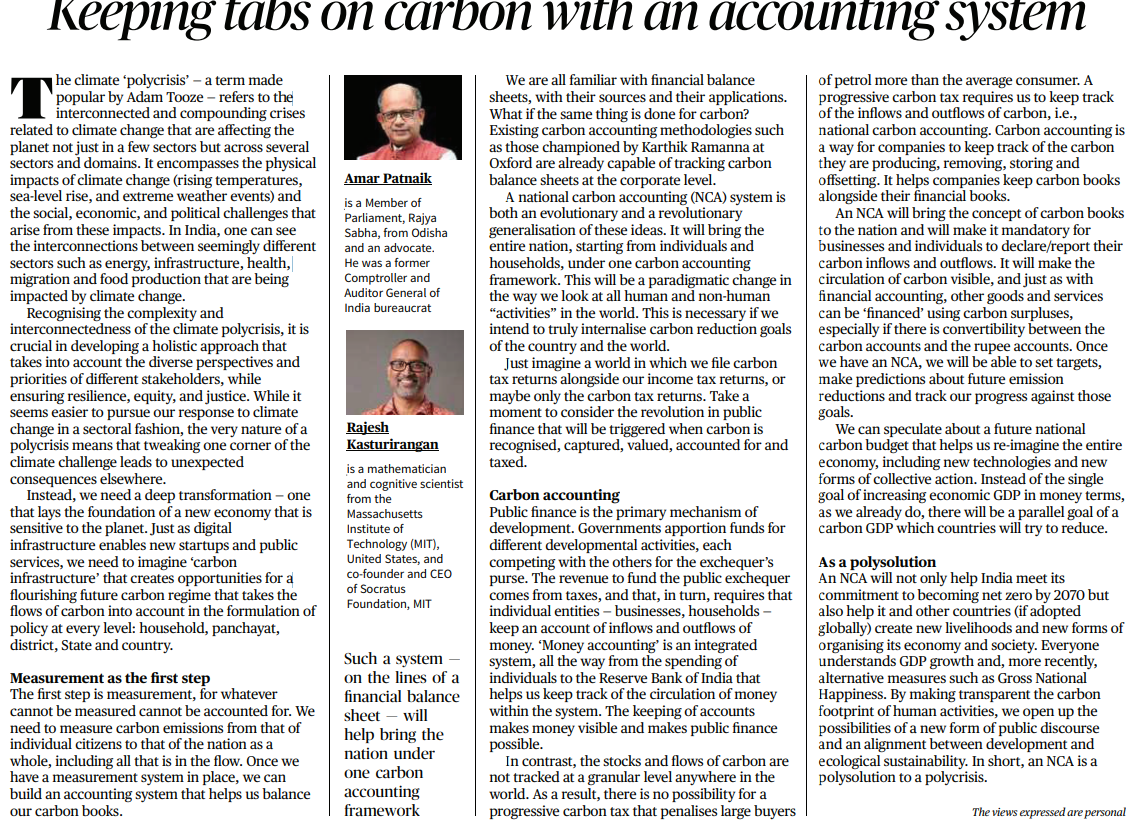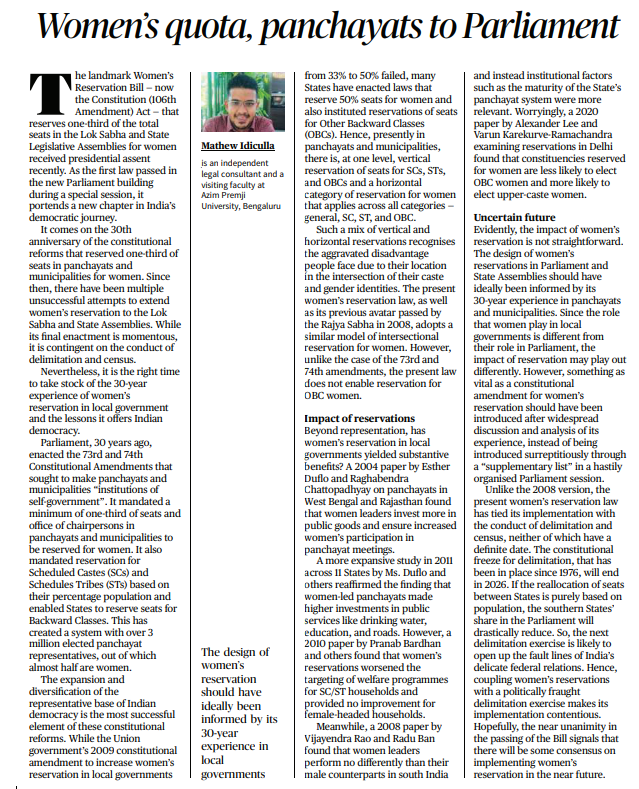The Climate Polycrisis: A Multifaceted Challenge
Introduction:
- The term “climate polycrisis,” coined by Adam Tooze, encapsulates the complex and interconnected web of crises stemming from climate change.
- It encompasses not only the physical impacts such as rising temperatures, sea-level rise, and extreme weather events but also the socio-economic and political challenges that arise as a result.
In India, this polycrisis manifests in various sectors like energy, infrastructure, health, migration, and food production.
The Need for a Holistic Approach
- Recognizing the intricate interplay within the climate polycrisis is essential for developing effective solutions.
- A sectoral approach, which addresses individual challenges separately, may lead to unintended consequences.
- Instead, a holistic transformation is required, laying the foundation for an eco-sensitive economy.
- Similar to digital infrastructure enabling innovation, “carbon infrastructure” should consider carbon flows at every level of policymaking.
Measurement as the Starting Point
- To address the climate polycrisis, measurement is paramount. What cannot be measured cannot be managed.
- Establishing a robust system for measuring carbon emissions, from individuals to the entire nation, is crucial.
- Carbon accounting methodologies, such as those championed by Karthik Ramanna at Oxford, already exist at the corporate level.
- Scaling this to create a national carbon accounting (NCA) system would revolutionize how we view human and non-human activities in relation to carbon.
Carbon Accounting Revolution
- In the envisioned world, individuals would file carbon tax returns alongside or instead of income tax returns.
- This shift in public finance, where carbon is recognized, valued, accounted for, and taxed, has the potential to transform the economic landscape.
Carbon Accounting’s Role in Public Finance
- Unlike money, the stocks and flows of carbon are not meticulously tracked globally.
- This absence of granular data prevents the implementation of a progressive carbon tax.
- NCA would introduce the concept of carbon accounting to the nation, obligating businesses and individuals to report their carbon inflows and outflows.
- This transparency would allow for the circulation of carbon, akin to financial accounting, enabling goods and services to be ‘financed’ using carbon surpluses.
Towards a Carbon-Centric Economy
- With NCA in place, we can envision a national carbon budget that reshapes the entire economy, fostering new technologies and collective actions.
- The focus would shift from merely increasing economic GDP to reducing carbon GDP.
- NCA offers a polysolution to the multifaceted climate polycrisis, helping India achieve its net-zero commitment by 2070 while also creating new livelihoods and aligning development with ecological sustainability.
Conclusion
Embracing carbon accounting as a tool to measure, track, and manage carbon emissions is vital in addressing the complex and interconnected climate polycrisis. It not only aids in achieving climate goals but also paves the way for a sustainable, carbon-centric economy with the potential for global adoption.
The Implications of the Women's Reservation Bill in India
Introduction
- The recent presidential assent to the Women’s Reservation Bill, now the Constitution (106th Amendment) Act, marks a significant development in India’s democratic journey.
- This legislation reserves one-third of the seats in the Lok Sabha and State Legislative Assemblies for women.
- The bill’s passage coincides with the 30th anniversary of constitutional reforms that reserved one-third of seats in local panchayats and municipalities for women.
- While this landmark act is momentous, its implementation depends on delimitation and census processes.
The Success of Local Government Reservations
- Three decades ago, India enacted the 73rd and 74th Constitutional Amendments, which reserved one-third of seats and the office of chairpersons in local panchayats and municipalities for women.
- This led to a substantial increase in the number of elected women representatives, with nearly half of all representatives being women.
- The introduction of vertical and horizontal reservations, including seats for Scheduled Castes, Scheduled Tribes, Other Backward Classes, and women, recognized the intersectionality of disadvantage based on caste and gender identities.
Impact of Reservations
- The impact of women’s reservations in local governments has been mixed. Research has shown that women leaders in panchayats invest more in public goods and promote women’s participation in meetings.
- However, some studies have indicated negative consequences, such as worsened targeting of welfare programs for certain groups and no improvement for female-headed households.
- Factors like the maturity of the State’s panchayat system also play a significant role in outcomes.
- A recent study found that constituencies reserved for women are less likely to elect Other Backward Class (OBC) women and more likely to elect upper-caste women.
Uncertain Future
- The design of the Women’s Reservation Bill for Parliament and State Assemblies should ideally have been informed by the 30-year experience of reservations in local governments.
- Since the roles women play in these two contexts differ, the impact of reservations may vary.
- However, the bill’s introduction through a “supplementary list” during a hastily organized Parliament session raises questions about the depth of discussion and analysis preceding its introduction.
- Additionally, the bill’s implementation is tied to delimitation and census processes, both of which lack definitive dates.
- The impending end of the constitutional freeze on delimitation in 2026 may strain India’s federal relations during the next delimitation exercise. ‘
- This coupling of women’s reservations with a potentially contentious delimitation process makes its implementation uncertain.
- Despite these challenges, the near unanimity in the passage of the bill suggests a growing consensus on implementing women’s reservations in the future.
- However, the bill’s effectiveness and its implications for gender equality and political representation will depend on careful planning and analysis informed by India’s experience with local government reservations.
Question: Assess the significance, challenges, and federal implications of the Constitution (106th Amendment) Act, reserving one-third of seats in the Lok Sabha and State Legislative Assemblies for women, in light of India’s experience with local government reservations.




